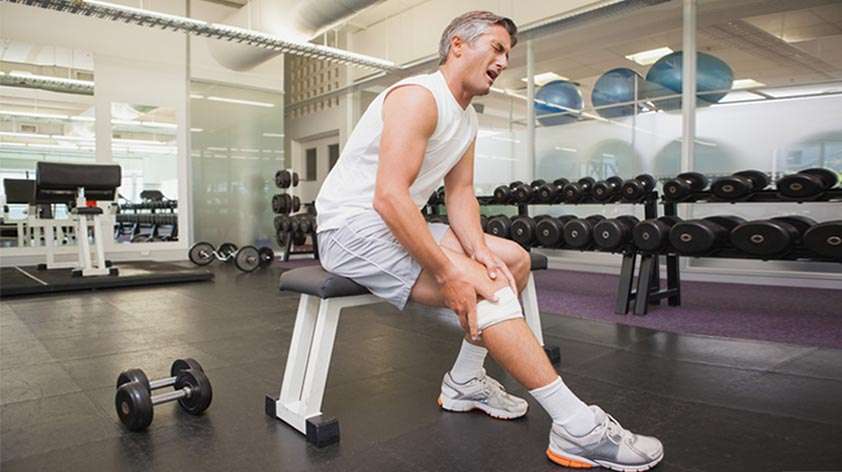Table of Contents:
Injuries can be a frustrating setback, whether you are an athlete or someone who simply enjoys staying active and fit. However, staying fit while injured is not impossible. In this guide, we’ll explore various methods and tips for maintaining your fitness and overall health during the healing process. It’s crucial to remember that consulting with your doctor or physical therapist is essential to ensure a safe and effective recovery.
Method 1: Arm and Shoulder Injuries
When faced with arm or shoulder injuries, it’s essential to focus on alternative exercises that don’t strain the injured area. Here are some tips to consider:
Lower Body Work: While your upper body is healing, concentrate on lower body exercises to maintain overall fitness. Leg and core workouts can help you stay active and strong.
Gentle Stretches: Improve flexibility in your injured arm or shoulder through gentle stretching exercises. This will help increase your range of motion and reduce the risk of future injuries.
Gradual Strengthening: After receiving the green light from your healthcare professional, incorporate gentle upper-body exercises with the injured arm to prevent future injuries. Ensure you follow their advice closely.
Avoid Overextension: Be cautious not to overextend the injured area. While it’s essential to reintroduce movement, it’s equally important not to worsen the injury.
Method 2: Neck and Back Injuries
Try water aerobics to reduce stress on your spine. Doing cardio is a vital part of keeping in shape, but many types of cardio exercise can be jarring to your neck and back. Go swimming or sign up for a water aerobics class to get your heart pumping while also providing extra support for your spine.
Injuries to the neck and back can be especially challenging. Here are some strategies to help you maintain your fitness during the recovery process:
Water Aerobics: Opt for low-impact activities like water aerobics or swimming to reduce stress on your spine while getting your heart rate up. Water exercises provide additional support for your spine, making them an excellent choice for rehabilitation.
Gentle Stretches: Focus on gentle stretches that target your shoulders, hips, knees, and ankles. These stretches can help improve your mobility, reducing the risk of stiff joints.
Core Strengthening: Strengthen your core to provide stability to your neck and spine, ultimately reducing pain and the likelihood of future injuries.
Proper Form: Pay close attention to your posture and form during all exercises. Maintaining proper form is crucial to prevent new injuries and avoid exacerbating your existing condition. Seek guidance from a physical therapist or personal trainer if needed.
Avoid Twisting and Bending: Unless advised by your healthcare provider, avoid exercises that involve twisting, arching, or flexing your spine. Prioritize movements that are spine-friendly.
Method 3: Leg Injuries
When dealing with leg injuries, it’s important to focus on upper body exercises and safe leg workouts. Here are some helpful tips:
Upper Body Focus: While your leg heals, concentrate on upper body exercises to maintain your overall fitness. Seated or reclining exercises are great options that reduce the load on your legs.
Low-Impact Cardio: Water-based exercises, such as swimming and water aerobics, provide a low-impact cardio option that is gentle on your legs. Always obtain clearance from your healthcare professional before diving into these activities.
Isometric Exercises: Isometric exercises target specific muscles without putting excessive strain on your injured leg. These exercises can help maintain strength and mobility during your recovery.
Unilateral Exercises: Work on your uninjured leg to prevent muscle imbalances. Dynamic stretches and strengthening exercises that involve a single leg can help maintain overall strength.
Method 4: General Tips
Consult Your Doctor: Always consult with your doctor before resuming any exercise regimen post-injury. Your healthcare provider can provide guidance on what is safe for you.
Choose Appropriate Exercises: Begin with less challenging exercises that are suitable for your injured areas. Gradually progress as your condition improves.
Cross Training: Consider cross-training by alternating between different types of exercises throughout the week. This approach helps you maintain overall fitness even when specific exercises are off-limits due to injury.
Listen to Your Body: Avoid any exercises that cause pain. Pain is your body’s way of signaling potential problems, so heed this warning.
Prioritize Rest: Aim for at least 7-9 hours of sleep each night during your recovery. Sleep is a crucial component of your body’s healing and regeneration process.
Maintain a Balanced Diet: Eat a well-balanced diet and stay hydrated to provide your body with the necessary nutrients for healing and overall health, even during periods of reduced physical activity.
Article provided by wikiHow, a wiki that is building the world’s largest and highest quality how-to manual. Please edit this article and find author credits at the original wikiHow article on How to Keep Fit While Injured. Content on wikiHow can be shared under a Creative Commons License.


